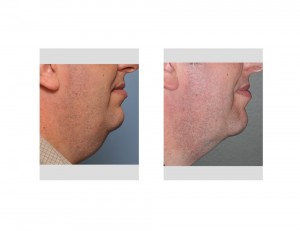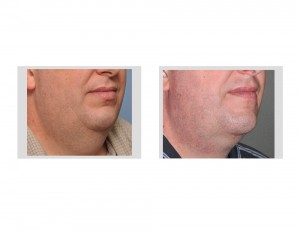Background: The shape of the neck is one of the most important aesthetic facial areas. Having a shapely neck allows the chin and the jawline to be more clearly seen which not only creates improved facial definition but creates a more youthful look. This is evidenced in patients who undergo weight loss and those who have facelift/necklift surgery.
The anatomy of the neck is fairly simple and has three distinct structures that are interdependent. There is the overlying skin, the underlying platysma muscle and the intervening skin.There are also structures underneath the platysma muscle (fat, submandibuar glands) but there are not as easily accessed or changed. How much loose skin and fat one has plays a major role in the shape of one’s neck.
In a large or ‘bull neck’ the contribution of the fat can be considerable. This is most frequently seen in men and women who often carry excess weight. This is no surprise given what percent of fat makes up the neck. The heavier in weight one is, the bigger the neck usually is. Weight loss can help reduce the size of the neck but that alone often is not completely successful.
Case Study: This 45 year-old male wanted to improve his neck. He was a large man but carried his weight well due to his height. But his large neck was disproportionate to how the rest of his body appeared. In reviewing the options for neck contouring (liposuction, liposuction with submentoplasty and a necklift/lower facelift), he opted for liposuction alone without any tissue excision. He did so with the understanding that the neck contour change would be the most limited and would only be about a 1/3 of that of a necklift.


The success and limits of neck liposuction depends on what the skin will do. How much will it contract and shrink up? That will depend on how much extra skin exists and how much elasticity it has. Generally male neck skin has a better ability to contract than females due to thicker skin and more innate elastic fibers. But there is a limit to skin contraction and almost all full large neck liposuction results will not be a cut and sharp cervicomental neck angle. There will be improvement but more significant results require skin management as well.
Case Highlights:
1) Large full necks are an aesthetic challenge because of the amount of excess skin that exists.
2) In younger patients with thicker skin that may have some remaining elasticity, liposuction alone can have a positive effect without risk of loose residual skin.
3) The results of neck liposuction can always be followed by a secondary necklift for further improvement.
Dr. Barry Eppley
Indianapolis, Indiana


